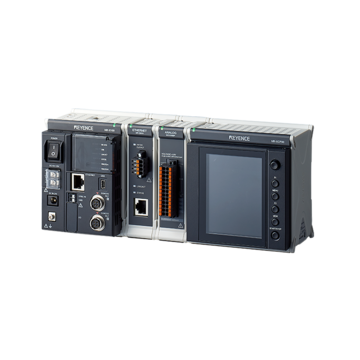Data Acquisition (DAQ)
The Importance of Channel Isolation for DAQ and Data Loggers
-
Tags:
- Data Acquisition
The term channel isolation refers to the separation of electrical signals between individual channels to prevent the unwanted current flow and the spread of noise that could distort data readings or compromise system performance. Whether in industrial plants, medical devices, or automotive diagnostics, channel isolation provides a much-needed safeguard to transmit data and improve system longevity accurately.
There are multiple methods to ensure that electrical isolation can be achieved, including optical isolation, galvanic separation, transformer coupling, and capacitive isolation. These technologies work to block interference while allowing the required signals to pass through the isolation barrier.
Types of Isolation in DAQ Systems
Among the different types of isolation, there is channel-to-channel isolation, which ensures that each signal path is electrically separated from others. This prevents crosstalk and unwanted interference.
There is also a channel to PC isolation, which minimizes ground loops between the DAQ system and connected devices, offering the most cost-effective solution for large-scale, multi-channel configurations. The NR-X Series from KEYENCE provides isolated channels and measurement modules, allowing you to expand in channel count without compromising performance.
Get detailed information on our products by downloading our catalog.
View Catalog

The Role of Electrical Isolation in DAQ and Data Loggers
By preventing unwanted current flow between interconnected components, isolation works to keep signals clean and interference-free, even in complex or high-risk environments. It also helps in isolated measurement systems where precision and safety are the number one priority.
In settings where electromagnetic interference (EMI) and voltage fluctuations are common, channel isolation is integral to signal fidelity. Environments with heavy machinery or switching devices generate electrical noise that can compromise data collection. Advanced isolation modules combat these issues using technologies like optical coupling and capacitive isolators, which are designed to reject EMI.
Ground loops are another common source of noise. They occur when differences exist between two grounding points and create unwanted current paths. Electrical isolation breaks this galvanic connection, stopping the current from flowing where it shouldn’t.
Modern isolated measurement systems integrate signal isolation directly into their architecture, which offers enhanced scalability and flexibility. Integrated isolations improve communication between channels and make sure that each isolated input is accurately transferring its data without interference.
How Channel-to-Channel Isolation Protects Your Data
In DAQ systems, where multiple input/output channels operate simultaneously, interference between channels can lead to inaccurate reporting. Channel-to-channel isolation helps eliminate that risk by keeping signals transmitting on one channel and remaining unaffected by others. This isolation is especially critical in systems with simultaneous sampling, where precise synchronization is required for real-time monitoring and data logging (check out the KEYENCE NR-X data logger here). Without isolation, overlapping signals can cause errors and distort collected data, which can impact critical decision making in the future.
Common-mode noise–a type of noise that can corrupt sensitive signals–poses a serious threat to data integrity. Isolators can block this type of interference by creating a non-conductive barrier between channels. High-speed isolators, which transmit data at fast rates, further ensure that real-time communication and data processing remains unaffected. For example, in automotive applications, DAQ systems with isolated channels allow for the simultaneous monitoring of multiple sensors, like those taking temperature measurements during stress tests of engine parts. This data provides operators with real-time insights into engine performance and durability.
We’re here to provide you with more details.
Reach out today!

Benefits of Channel Isolation in Electrical Systems
To enhance system performance and reliability, channel isolation within isolated measurement systems needs to be integrated. Signals need to be safeguarded against interference, and isolation can help ensure accurate data collection by enabling modular expansion.
Enhancing System Reliability and Safety
Electrical isolation plays a crucial role in protecting sensitive data acquisition equipment. Without proper isolation, sudden voltage spikes could damage sensors and signal processors, which could lead to costly repairs and downtime. Isolated systems prolong the operational lifespan of DAQ components and reduce the likelihood of system failures. Additionally, isolation is a key safety requirement in hazardous environments. Isolators can prevent electrical faults from igniting dangerous substances.
Optimized Data Collection and Signal Processing
In high-precision applications, like scientific research and semiconductor fabrication, even minor signal degradation can lead to significant errors. Isolated systems ensure that signals remain intact across multiple channels. This allows DAQ systems to process large datasets with precision and efficiency.
Scalability and Flexibility
Modern DAQ systems require scalability to accommodate expanding needs without having to compromise on performance. Isolated systems with modular architectures are able to provide this flexibility by allowing additional channels to be added. Modular DAQ setups can support growing sensor networks while maintaining isolation integrity across all channels. The modular design also helps minimize costs because additional channels do not require extensive rewiring or new system reconfigurations.
Cost and Efficiency Gains
Multi-channel isolators offer substantial cost benefits by consolidating multiple signal paths into a single module, thus reducing the need for individual isolators for each channel. With several channels within one device, organizations save on both hardware and installation expenses. In addition to upfront savings, isolated systems provide long-term cost reductions by minimizing signal errors and maintenance requirements.
Common Challenges in Channel Isolation and How to Overcome Them
While there are significant benefits, channel isolation also presents challenges that can impact performance if not properly addressed. High-powered equipment can emit electromagnetic and magnetic interference, which threatens the integrity of isolated signals. Without adequate protection, noise from these sources can cause signal distortion or data loss and further compromise the performance of the isolated system. Additionally, using opto-isolators in environments prone to EMI further minimizes interference.
Excess heat can also degrade performance, reduce the lifespan of components and introduce errors in critical measurements. To address this, selecting materials with high thermal conductivity and implementing advanced cooling methods, such as heat sinks or airflow systems, can help dissipate this heat.
With the right preventative measures and strategies, these (and other) challenges can be overcome with the right electrical isolation across data acquisition systems. If you’re ready to enhance your DAQ systems with reliable channel isolation–contact us today!
Contact us to learn more about how our advanced technology can help take your business to the next level.
Contact Us


